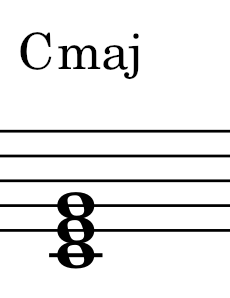Broken chords are an essential part of piano chord technique. They are characterized by their sequential note execution rather than simultaneous play.
This technique alters the chord, from a set of notes played simultaneously, to a melodic line which provides more color and dynamic to a composition. This approach added rhythm and fresh textural qualities to piano compositions, making broken chords a crucial skill to practice.

Essentials of broken chord patterns
Basic structure of broken chords
A broken chord is able to transform a static chord sound into a dynamic and lively musical statement. Broken chords are constructed by sequentially playing the notes of a chord.
Generally, a chord is built from three or more notes played simultaneously; however, when these notes are played one after the other, they form a broken chord. This pattern can be ascending, descending, or any combination thereof.
To understand the basic structure of broken chords, you need to be able to recognize the root, third, fifth, and potentially additional tones that constitute the full chord.

For example, a C major chord broken chord would be played as individual C, E, and G notes in succession. This approach not only adds a rhythmic quality to the music but also allows for a more nuanced expression of the chord’s character.


Common broken chord progressions
If you want to expand your repertoire and knowledge of piano, exploring chord progressions using broken chords is important. A broken chord piano progression often follows familiar patterns found in various musical styles.
For example, if you play the I – IV – V progression, which is very common in classical and popular music, you transform the static progression into something more developed and pleasing. In jazz, the ii-V-I progression is frequently employed, providing a smooth, flowing transition through key changes.

The broken chord symbol in sheet music is typically the same as for block chords; however, the way they are played differentiates them. Recognizing these symbols and understanding their execution in a broken manner is key to mastering this technique.
Moreover, the beauty of piano broken chords lies in their versatility. Whether in a soulful ballad or an upbeat pop tune, these progressions can be adapted to set the mood and enhance the musical texture.
Playing broken chords in different time signatures
In order to play broken chords properly, you will need to understand how time signatures work. In simple time signatures like 4/4 or 3/4, each beat is divided into two equal parts. When applying broken chords in these time signatures, the rhythm and pace at which the notes of the chord are played can significantly influence the overall feel of the piece.
For instance, a broken chord played with each note corresponding to each beat in a 4/4 time signature creates a steady and predictable rhythm, ideal for beginners or for establishing a calm, steady pace in a piece.

Broken chords in compound time
On the other hand, time signatures like 6/8 or 9/9 are called compound time signatures. These time signatures divide measures into three parts. Mastery of broken chords in these time signatures involves not only playing the notes of the chord in sequence but also aligning them with the compound rhythm.
This can add a sense of fluidity and sophistication to the music. For example, playing a broken chord in a 6/8 time signature might involve playing two notes of the chord per beat, resulting in a flowing, waltz-like rhythm.

Learning how these differences in time work is extremely important if you want to apply and adapt broken chords to various musical contexts. Whether in simple or compound time, broken chords provide a tool for enhancing the rhythmic and harmonic richness of a piece, offering endless possibilities for creative expression.
Creative variations with broken chords
It is necessary to first build your skills with basic broken chord patterns. However, exploring variations within these patterns can lead to creative and unique interpretations of music. By altering the order, timing, or dynamics of the notes within a broken chord, a pianist can drastically change the mood and style of a piece. For instance, playing the notes of a broken chord with varying velocities or introducing syncopation can create a sense of excitement and unpredictability.
Innovative alternatives to traditional patterns
Beyond the traditional patterns, you can experiment with new patterns of playing broken chords. This can include integrating non-standard intervals, altering the chord’s structure, or even merging different broken chords together. Such experimentation not only enhances a pianist’s technical skills but also expands their creative horizons, allowing for more personal and expressive performances.
Understanding how to alter broken chords opens up a world of possibilities for composition and improvisation. It allows for the creation of unique harmonic textures and rhythmic patterns that can set a composition apart.
Advanced broken chord techniques and styles
More advanced piano compositions involve more detailed use of dynamics and articulation in broken chords. By varying the volume and touch of each note within a broken chord, pianists can convey a wide range of emotions and textures. For example, playing the notes of a broken chord softly and legato (smoothly) can create a sense of calm and introspection, while playing them loudly and staccato (detached) can evoke excitement or tension.
The role of broken chords in music
Broken chords are extremely useful in conveying a more nuanced emotional undertone than standard block chord playing. Their application varies widely, capable of evoking a range of emotions from tranquility to intensity. Mastery of broken chords is thus essential for pianists at all levels, as it not only enhances technical proficiency but also contributes significantly to the depth and nuance of musical interpretation.
Broken chords can be used and adapted in a wide array of musical contexts. In classical music, broken chords can provide a lush, romantic backdrop. In contrast, in contemporary genres like pop or jazz, they can be used more rhythmically to add groove or drive to a piece.
Understanding how to adapt broken chord techniques to different styles is a valuable skill and will allow you to navigate diverse musical landscapes with ease.
Moreover, the integration of broken chords into different genres often involves understanding the stylistic nuances of each genre. For instance, in jazz, broken chords might be used more freely and improvisationally, while in classical music, they might adhere more closely to structured patterns and progressions.
Practice strategies for broken chords
Like all things with the piano, consistent practice is essential to master broken chords. A variety of exercises and drills can aid in this process. Beginners might start with simple arpeggios, which are essentially broken chords played one note at a time, to get comfortable with the finger movements. As proficiency grows, pianists can practice with more complex chord structures and progressions, varying the rhythm and speed to challenge their skills.
Practicing with different time signatures and dynamics is likewise important. For instance, practicing the same broken chord pattern in both 4/4 and 6/8 time signatures can provide insight into how rhythm influences the feel of the chord. Similarly, playing broken chords with different dynamic levels (piano, forte, crescendo, etc.) can help in mastering expressive playing.
Tips for effective practice
Effective practice of broken chords involves more than repetitive playing. Here are some tips to enhance practice sessions:
- Slow down: Begin by playing broken chords slowly to ensure accuracy and clarity of each note.
- Use a metronome: This helps in maintaining a consistent tempo and developing a strong sense of rhythm.
- Focus on hand position and finger strength: Proper technique is crucial to avoid strain and to play efficiently.
- Listen actively: Pay attention to the sound produced. Listening helps in refining tone and dynamics.
- Experiment with different styles: Try playing broken chords in various musical styles to understand their versatility.
- Incorporate into pieces: Apply what you’ve learned in actual pieces of music, not just in isolation.
The practical value of broken chords in piano playing
Learning to use broken chords is a vital skill for any pianist seeking to enhance their musical repertoire. These chords are not merely an exercise in technique; they are an essential component of musical expression, adding depth and complexity to piano compositions. For beginners and advanced players alike, the mastery of broken chords is crucial for a well-rounded understanding of piano music.
As you incorporate broken chords into your playing, focus on the practical applications: how they can vary the texture of a piece, provide rhythmic interest, and enrich harmonic progressions. Through consistent practice and exploration of different styles, broken chords become a valuable tool in your musical toolkit.
Author of this blog post:
Susana Pérez Posada

With over seven years in piano education and a deep passion for music therapy, Susana brings a unique blend of expertise to Skoove. A graduate in Music Therapy from SRH Hochschule Heidelberg and an experienced classical pianist from Universidad EAFIT, she infuses her teaching with a holistic approach that transcends traditional piano lessons. In her writings for Skoove, Susana combines her rich musical knowledge with engaging storytelling, enriching the learning experience for pianists of all levels. Away from the piano, she loves exploring new places and immersing herself in a good book, believing these diverse experiences enhance her creative teaching style.
Edited and fact checked by Eddie Bond, multi-instrumentalist performer, composer, and music instructor
Published by Lidya Hovan from the Skoove team















